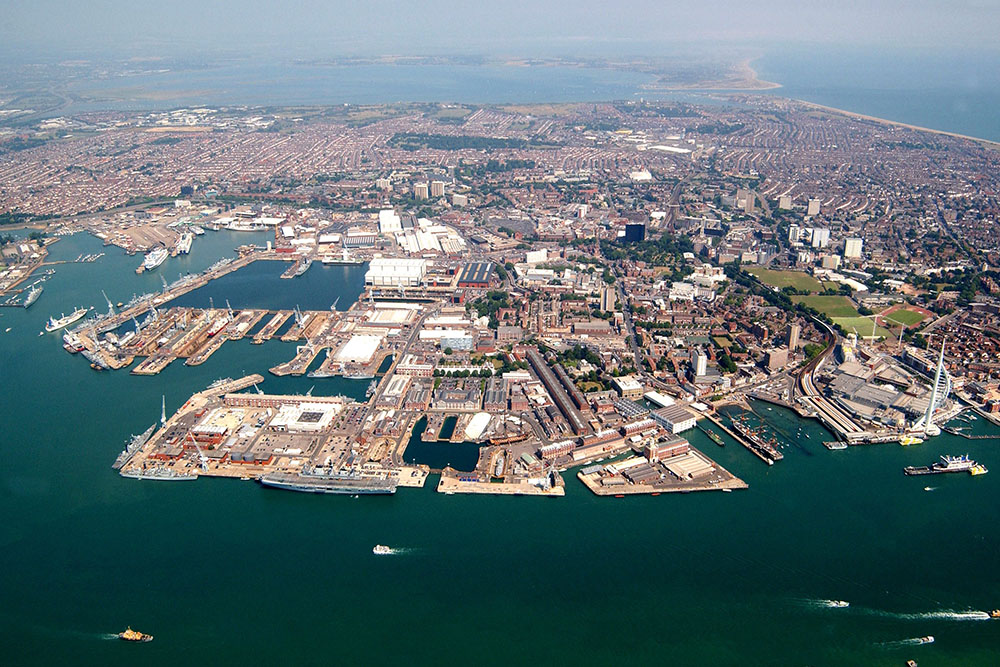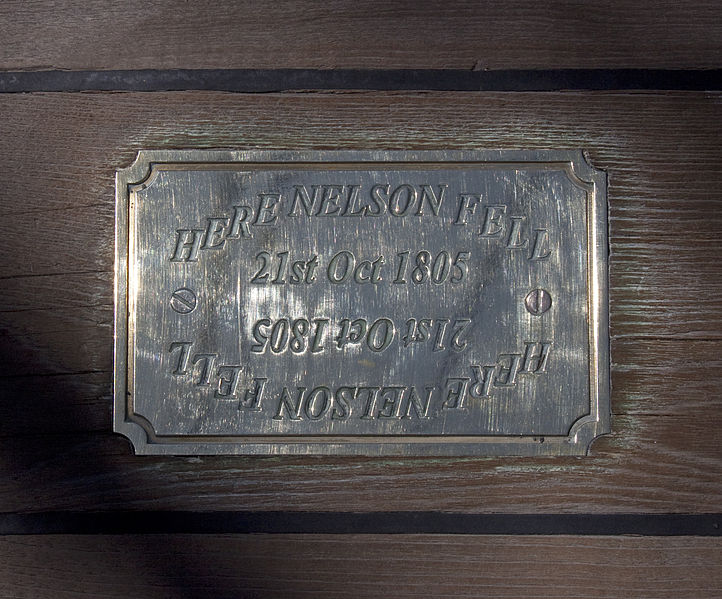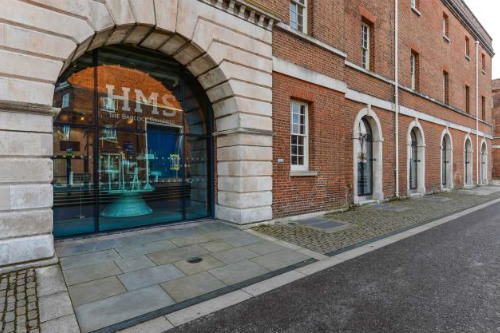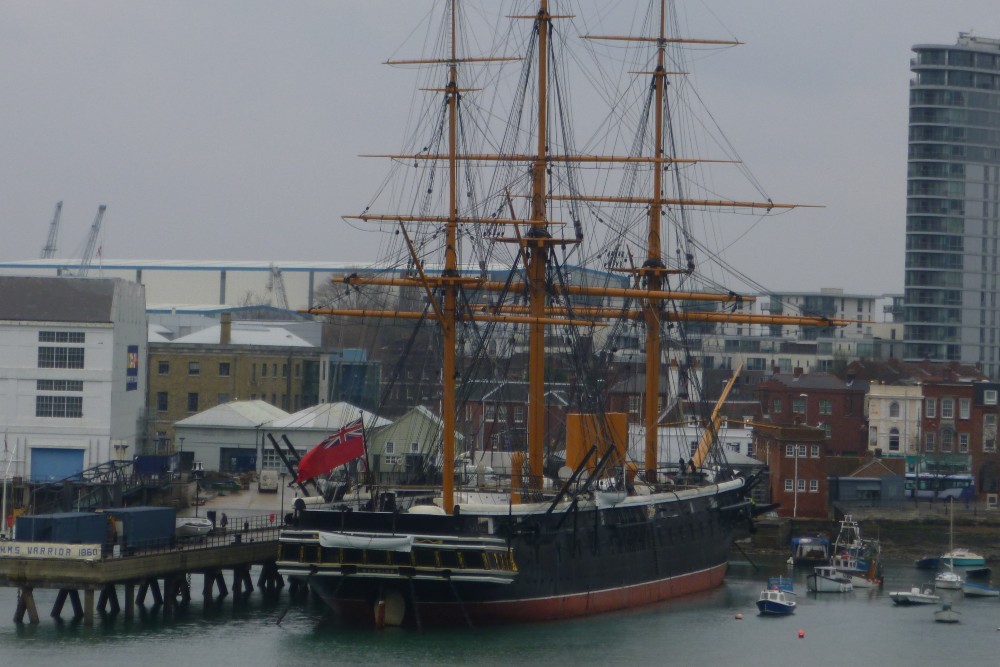HM Naval Base (HMNB) Portsmouth
HM Naval Base Portsmouth is the oldest continuously operating naval base in the world, founded in 1194, and remains one of the Royal Navy’s most important hubs, home today to Britain’s aircraft carriers and much of its surface fleet.
The base was established in 1194 under King Richard I, when Portsmouth received its first Royal Charter and began serving as a royal dockyard. By the 15th and 16th centuries, it had become central to England’s naval power, with Henry VII and Henry VIII both investing heavily in its fortifications and shipbuilding facilities. The dockyard launched some of the earliest purpose-built warships, including the Mary Rose in 1511.
Through the 17th and 18th centuries, Portsmouth expanded into the principal dockyard of the Royal Navy, supporting Britain’s rise as a global maritime power. It was from here that fleets sailed to fight in the Anglo-Dutch Wars, the Seven Years’ War, and the Napoleonic Wars. The base also became a major industrial site, pioneering mechanized block-making in the early 19th century, a key innovation of the Industrial Revolution.
In the 20th century, Portsmouth remained vital through both World Wars. It was a major embarkation point for Aquatint (1942) and the D-Day landings in 1944, and its dockyard repaired and refitted countless warships. After the war, the base adapted to the Cold War era, supporting destroyers, frigates, and aircraft carriers.
Today, HMNB Portsmouth covers 122 hectares (300 acres) and is home to around two-thirds of the Royal Navy’s surface ships, including the fleet’s flagships, the aircraft carriers HMS Queen Elizabeth and HMS Prince of Wales. It also houses the Type 45 destroyers, Type 23 frigates, and mine countermeasure vessels. Alongside its operational role, part of the base is open to the public as the Portsmouth Historic Dockyard, where visitors can see HMS Victory, HMS Warrior, and the Mary Rose.
Do you have more information about this location? Inform us!
Source
- Text: TracesofWar
- Photos: Photo: LA(PHOT) Paul A'Barrow./MOD
Nearby
Museum
- Royal Navy Portsmouth Historic Dockyard - Portsmouth
- National Museum Royal Navy - Portsmouth
- Royal Navy Submarine Museum - Gosport
Point of interest
- Shrapnel Impacts City Museum Portsmouth - Portsmouth
- Royal (Navy) Hospital Haslar - Gosport
- Landing Craft Tank (LCT) 7074 - Portsmouth
Monument
- Memorial Death Admiral Horatio Nelson - Portsmouth
- Bust Lord John Fieldhouse - Gosport
- Mosaic D-Day and Falklands War - Gosport
Cemetery
- Commonwealth War Grave Portsmouth Cathedral Churchyard - Portsmouth
- Grave of Admiral Osmond de Beauvoir Brock (Portsmouth Cathedral) - Portsmouth
- Portsmouth Naval Memorial - Portsmouth












